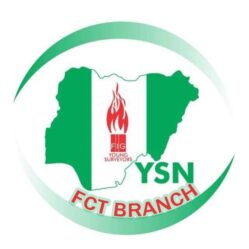Today our focus will be on Augmented Boundaries. Land-surveying involves knowing the boundaries of subdivided land and Augmented Reality can be used to visualize boundaries and optimize Survey workflow.
Let’s do a deep dive together
Augmented Boundaries:
Augmented Boundaries involves the technology that overlays digital information, such as Boundary images, videos, or 3D models, onto the real world, as seen through a device like a smartphone, tablet, or AR glasses during surveying activities. This approach allows surveyors to visualize, edit, and interact with boundary data in real-time while in the field, significantly improving the quality of their work.
Platforms for Augmented Reality: Three such hardware platforms that fit under monitor-based- and see-through displays are head-mounted display, tablets and smartphones;
Head-mounted displays: One of the aforementioned platforms is Microsoft HoloLens which belongs to see through head-mounted displays This device consists of the
necessary sensors to create an augmented experience. One key feature that Microsoft
HoloLens has compared to other platforms is that it provides hands-free interaction.
Not only because it is mounted on the head of the user, but also since it has both
hand-tracking and voice recognition as sources for input.
Tablets and smartphones: Tablets and smartphones are commonly used as displays for Augmented Reality (AR) applications due to their widespread availability, built-in sensors, and processing power.
How AR Works?:
Camera Input: The AR device captures the real-world environment through its camera.
Processing: The AR software processes the video feed and identifies key features, such as surfaces or specific objects.
Rendering: Digital content is rendered and overlaid on the video feed, aligned with the real-world objects detected by the software.
Display: The Displays shows an outline and shading of the land parcel the land surveyor is standing in at that time. If the land surveyor moved over the boundary to an adjacent land parcel, the outline and shading of that adjacent parcel would be displayed.
How Can Augmented Reality Be Used by Land Surveyors?:
While construction staking, AR can be used to assist with structure and improvement location. A quick visual check can help confirm staking calculations are consistent with engineering design.
Use AR to visually check installed improvements, including curbs, utility structures, and paving. Any deviation from the proposed design should be quite evident.
When establishing property corners, AR will help the field crew quickly determine whether the calculated location is accessible. This can be used for staking out pre-calculated boundary points and/or proposed lot corners in a new subdivision.
Once Again this is just a sneak peek of what Augmented Boundaries is all about. To learn more you can visit some of these links.
https://www.youtube.com/watch?v=XPNUmcEOYW0
https://www.youtube.com/watch?v=nUxsP4lQJns
https://www.youtube.com/watch?v=1xoYzJcLdFc
https://www.youtube.com/watch?v=fZl2MP47OaM
Thank you for reading. We expect your feedback (either as a contribution or a question on this topic)
ysnfctabuja@gmail.com
Signed ✍ :
- Surv. Uju O. IZUEGBU, MNIS
Chair: YSN-FCT
- Surv. Angela Omamuyovwi ANYAKORA
Head: Education Committee YSN-FCT
Announcer:
Moyinoluwa Olajide
Member: Education Committee YSN-FCT


